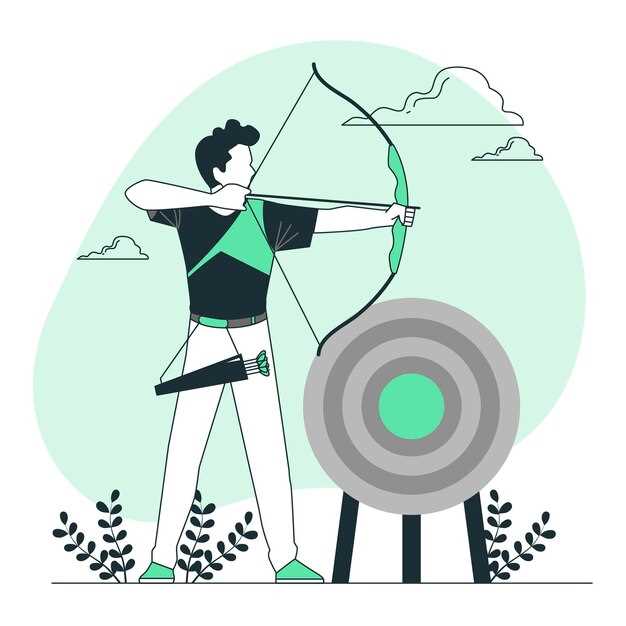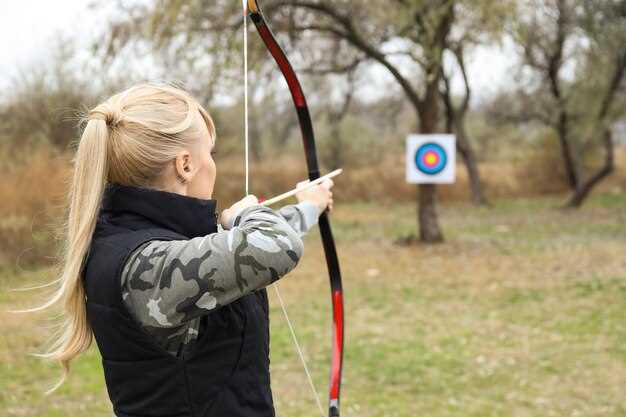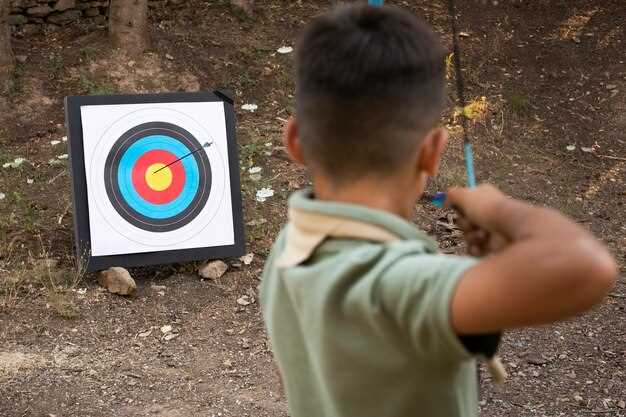
Archery is a captivating sport that blends skill, focus, and precision. For beginners, diving into the world of archery can be both exciting and overwhelming. Understanding the basics of this ancient practice is essential for anyone looking to master the art of shooting arrows. With the right guidance and tips, you can quickly progress from a novice to a competent archer.
Before you step onto the range, it’s crucial to familiarize yourself with essential gear and equipment. Whether you’re selecting your first bow or choosing the right arrows, knowledge of the different types available is important. A beginner should invest time in understanding their options to ensure comfort and effectiveness while shooting.
Moreover, mastering the basics of archery involves not only physical practice but also mental preparation. Proper stance, grip, and aim are foundational skills that every archer must develop. By focusing on these fundamental techniques, you will build a solid foundation for your archery journey, allowing you to enjoy the experience and achieve your goals.
Choosing the Right Beginner Bow for Your Needs

When starting out in recreational archery, selecting the right beginner bow is crucial to ensure a positive experience. Understanding the basics of bow types and their features can help you make an informed decision. There are two primary types of bows suitable for beginners: recurve bows and compound bows.
Recurve bows are highly recommended for new archers due to their simplicity and ease of use. They have a traditional design with limbs that curve away from the archer when unstrung. This type of bow allows for a solid learning foundation and is great for practicing shooting form and technique. Additionally, recurve bows are often more affordable, making them an accessible option for those just getting started.
Compound bows utilize a system of pulleys and cables to offer a mechanical advantage, which can make them easier to draw at full draw weight. However, they can be more complex and might not be the best choice for someone unfamiliar with archery basics. If you are focused on longer-term progression in the sport, investing in a compound bow might be worthwhile, but it is essential to gain experience with simpler equipment first.
When selecting a bow, consider your draw length and draw weight. Draw length is critical; it determines how comfortably and efficiently you can shoot. Most manufacturers provide charts to help you find your ideal draw length based on your height and arm span. Draw weight refers to the amount of force required to pull the bowstring. Beginners should opt for lighter draw weights, typically between 20 to 30 pounds, to develop proper technique without risking injury.
Additionally, think about whether you want to shoot right-handed or left-handed. Many beginner bows are available for both orientations. It is crucial to choose a bow that feels comfortable in your hands and aligns well with your shooting stance.
Lastly, consider purchasing a bow package that includes essential accessories like an arrow rest, sight, and protective equipment. Bundling your bow with these essentials can save you time and money while ensuring you have everything needed for a successful start in archery.
Understanding the Different Types of Arrows
For beginners in recreational archery, choosing the right arrows is essential for improving accuracy and performance. Understanding the different types of arrows will help you find the perfect match for your bow and shooting style. Here are the main categories of arrows:
- Target Arrows
- Designed for use in target archery competitions.
- Typically made from aluminum or carbon for durability and precision.
- Lightweight and straight, which aids in accuracy.
- Field Arrows
- Used for field archery, which involves shooting at targets placed at various distances and angles.
- These arrows tend to have a broader range of spine stiffness to accommodate different shooting conditions.
- Often feature rubber or plastic tips to prevent damage to the target.
- Bowhunting Arrows
- Specifically designed for bowhunting purposes.
- Heavier and tougher materials, like carbon, improve penetration and durability.
- These arrows typically have fixed or mechanical broadheads for effective game hunting.
- 3D Archery Arrows
- Used in 3D archery where shooters aim at life-size animal replicas.
- Often designed similarly to field arrows but can vary based on terrain and conditions.
- May include more varied fletching options to enhance accuracy.
When selecting arrows, consider the following basics:
- Spine Stiffness: This indicates how much the arrow bends. Proper spine selection is crucial for optimal performance.
- Length: Measure from the nock to the end of the shaft. Ensure you choose an appropriate length for safety and accuracy.
- Fletching: Arrows come with various fletching styles, which can impact stabilization and flight. Choose based on your shooting preferences.
Understanding these types of arrows will enhance your archery experience, allowing you to practice confidently and effectively. Make informed choices to boost your skills and enjoy your journey as a beginner archer.
Essential Safety Gear Every Archer Should Have

For beginners in archery, understanding safety gear is crucial. Safety equipment not only protects the archer but also ensures a safe environment for everyone involved. Below are the basic essentials every archer should consider.
| Safety Gear | Description |
|---|---|
| Arm Guard | An arm guard protects the forearm from string slap, which can cause bruising and discomfort. It is essential for beginners to ensure they practice safely. |
| Finger Tab or Glove | A finger tab or glove protects the fingers while pulling the bowstring. It allows for a clean release and enhances comfort during shooting. |
| Safety Glasses | Safety glasses are important to shield the eyes from debris and protect against accidental bowstring snaps. Wearing them is a good practice in archery. |
| Quiver | A quiver keeps arrows organized and within reach. Many quivers come with safety features, reducing the risk of accidental injury from sharp points. |
| Closed-Toe Shoes | Wearing closed-toe shoes provides protection for the feet from falling arrows or dropped equipment. It’s a necessary consideration for any archer. |
These essential safety gear items are critical for any beginner in archery. Investing in quality equipment not only enhances safety but also contributes to a positive archery experience.
Basic Stance and Form for Accuracy
The fundamentals of recreational archery hinge on a solid stance and proper form. Mastering these basics is crucial for achieving accuracy with your bow. Begin with your feet shoulder-width apart, ensuring your weight is evenly distributed. Position your non-dominant foot slightly forward to create a stable base, which aids in balance and control during the shot.
Your body should be aligned with the target, promoting a direct path for the arrow. Rotate your hips and shoulders to face the target, keeping your head up and eyes focused straight ahead. This alignment helps maintain consistency in your shooting technique.
As you draw the bow, use your back muscles rather than solely relying on your arms. This method improves stability and power. Keep your elbow at shoulder height, and avoid twisting your wrist, which can lead to inaccuracies. Aim to create a straight line from your bow hand to your drawing hand.
Grip the bow with a relaxed, but firm hold. A tight grip can introduce unwanted movement, affecting your shot. Instead, allow your fingers to wrap around the bow lightly, maintaining control without tension. Proper finger placement on the string is also essential: use three fingers, with the index finger above the arrow and the other two below.
Once you are in position, take a deep breath to steady yourself before releasing the arrow. Consistent breathing patterns help maintain focus and calmness. Remember, practice is integral to refining your stance and form, which ultimately enhances your accuracy in archery.
Maintaining Your Bow: Tips for Longevity
For beginners in the world of recreational archery, understanding how to maintain your bow is essential to ensure its longevity and optimal performance. The basics of bow maintenance include regular inspections, proper cleaning, and timely replacements of worn-out parts.
Start by inspecting your bow before each use. Check the limbs for any signs of stress or damage. Look for cracks or splinters in the wood or composite materials. Such issues can compromise the integrity of your bow and lead to poor performance or injury.
Cleaning your bow is another crucial aspect of maintenance. Use a soft, dry cloth to wipe down the surface and remove dust or moisture. Avoid harsh chemicals that could damage the finish. Additionally, pay attention to the bowstring; it should be clean and free of debris. Apply a bowstring wax regularly to enhance its durability and prevent fraying.
Remember to check the cam systems and limbs regularly. If you notice any issues, consult your manufacturer’s guidelines for adjustments or replacements. A well-tuned bow operates more efficiently, improving your accuracy and enjoyment.
Finally, store your bow in a safe environment. Avoid extreme temperatures and humidity, which can warp the materials over time. Using a protective case can prevent accidental damage and keep your bow in top condition when not in use.
By following these maintenance tips, beginner archers can significantly extend the life of their bows, allowing for countless enjoyable sessions on the range.
Finding Local Ranges and Archery Communities
For beginners looking to dive into the world of archery, discovering local ranges and communities is a crucial step. Archery ranges provide an accessible environment to practice your skills with a bow, offering designated areas for shooting at various distances and targets. These facilities often cater to different skill levels, making them perfect for newcomers.
To find a range near you, start by utilizing online search engines and social media platforms. Keywords such as “archery range near me” or “local archery clubs” can yield helpful results. Many ranges have websites detailing their services, schedules, and membership options. Additionally, local outdoor sports shops can be a valuable resource, as they often network within the archery community.
Joining an archery community can greatly enhance your learning experience. Communities frequently organize tournaments, workshops, and social events, helping beginners connect with more experienced archers. Participating in these activities can provide essential insights into proper technique and equipment maintenance, as well as foster a sense of camaraderie among enthusiasts.
Another avenue for finding local communities is through online forums and social media groups focused on archery. Platforms like Facebook and Reddit host various groups where members share tips, arrange meet-ups, and discuss equipment. Engaging in these discussions can provide a wealth of information and facilitate connections with other archers who share your passion.
In conclusion, finding local ranges and archery communities is a fundamental step for beginners. Not only will it enhance your skills with a bow, but it will also immerse you in a supportive community that shares your enthusiasm for archery.


